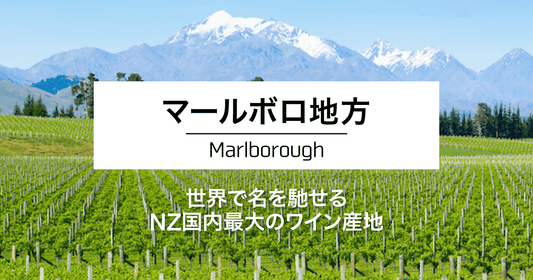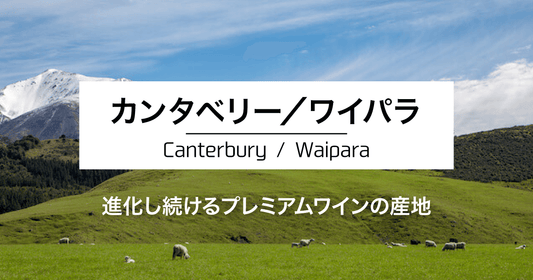
Gisborne , the city where the sun rises earliest in the world, is also the city closest to the International Date Line, so many tourists flock to the city to celebrate the New Year.
Due to its low latitude, the city has a relatively warm climate compared to other parts of the country, and is famous for its beautiful beaches and surfing spots. Due to the long hours of sunshine and high temperatures, it is also the city where harvesting begins earliest in New Zealand.
Located on the eastern tip of the North Island, it is a six hour drive or one hour flight from Auckland , and a three hour drive from the neighboring wine region of Hawke's Bay .

Although it is known as a producer of aromatic white wines, its main product is Chardonnay, which makes the most of the soil. Wine production in New Zealand has a long history, and it was once known as the largest producer.
Although it is a small town with a population of 37,000 (as of 2018), it is currently the third largest producer in the country and is also known as a resort and health destination.
We will explain more about Gisborne.
"The Chardonnay capital of NZ" with plenty of sunshine and a warm climate
Gisborne has an extremely warm climate with plenty of sunshine.
However, the rain showers prevent the temperature from rising too much, and the summer sea breeze helps to lower the temperature, keeping it at a level that does not affect grape cultivation.
By the way, Gisborne's average annual rainfall is 900-1,000mm, which is quite high for a wine producing region.
The soil is characterised by fine clay carried by the Waipaoa River, which places a lot of stress on the vines, but although grapes tend to thrive in relatively cool climates, this allows the wines to be produced in warmer climates with high quality.
The main variety produced is Chardonnay, and the city is known as the "Chardonnay capital" of New Zealand.

Other
- Chenin Blanc
- Gewurztraminer
- Pinot Gris
It is famous for producing aromatic varieties such as. One of its distinctive features is that it cultivates Chenin Blanc, which is rarely seen in other wine-producing areas in Japan.
However, although Gisborne is now known as the "Chardonnay capital" and is famous for its aromatic varieties, it used to be a wine producing region with different characteristics.
Formerly the largest wine producing region in Japan, now it is a region that pursues quality
Gisborne's wine production began in earnest in the 1960s.
Until then, grape cultivation in New Zealand had been centered around Auckland, but it gradually moved eastward in search of more suitable land.
By the way, the South Island, where wine production would later become popular, was still considered "unsuitable for grape cultivation" at this time, and the rise of the Marlborough region was yet to come.
Back to Gisborne.
Wine making became popular in this area, taking advantage of the fertile soil, and in the 1970s it became known as the country's largest wine producing region.
The main variety at this time was Muller-Thurgau .

This was because it was recommended by Dr. Helmut Becker of the Kaisenheim Institute in Germany as a variety that grows quickly, has high yields, and can adapt to a variety of soils.
It maintained its position as the largest wine producing region until the 1980s, but the number of small wineries gradually increased. The reason for this was probably Muller-Thurgau.
The main variety, Muller-Thurgau, was selling at a low price due to its characteristics. The New Zealand government saw this as a problem and began to replant it, leading to the variety almost disappearing.
The small wineries that emerged then began to produce higher quality, drier wines to be enjoyed with meals, rather than the previously popular "cheap" wines made with added alcohol, overturning the previous image of wine.
Currently, the main variety is Chardonnay, which is produced taking advantage of the rich soil and has flavors of pineapple, yellow peach, and tropical fruits.
Milton Vineyards: A pioneer of biodynamic farming
Several of Gisborne's smaller wineries practice biodynamic farming methods .
A representative example is Milton Vineyards , known as a pioneer of organic and biodynamic farming in New Zealand. Many wineries in New Zealand have now adopted this method, but Milton Vineyards was the pioneer.
It is said to be the first vineyard in New Zealand to be branded organic, and the winery quickly became famous for the white grapes produced there, Chenin Blanc.
Then, in 1989, the winery became the first to receive New Zealand's official organic certification, Bio-Gro .
Furthermore, in 2009, the company obtained certification from Demeter, a global organic certification organization.
It is also New Zealand's only member of the Renaissance des Appellations, an organisation founded by pioneers of biodynamic winemaking.
Milton Vineyards has a special commitment to making organic wines, and is currently training young producers who want to make wine using biodynamic farming methods, focusing on nurturing the next generation.
▶ Milton Vineyards official website
▶︎Purchase here: Bokumo Wine
Enjoy wine with the world's earliest midsummer sunrise
As I mentioned at the beginning, Gisborne is the city where the sun rises the earliest in the world, so inevitably, you can also see the first sunrise of the new year the earliest in the world.
Also, unlike in Japan, New Years in NZ is in the middle of summer!
New Year's in the middle of summer! I would love to experience this!
Gisborne has a warm climate and beautiful nature, and is known as a resort and health destination.
Seeing the first sunrise of summer, which you can't experience in Japan, and taking a small winery tour will allow you to enjoy summer in New Zealand to the fullest.






